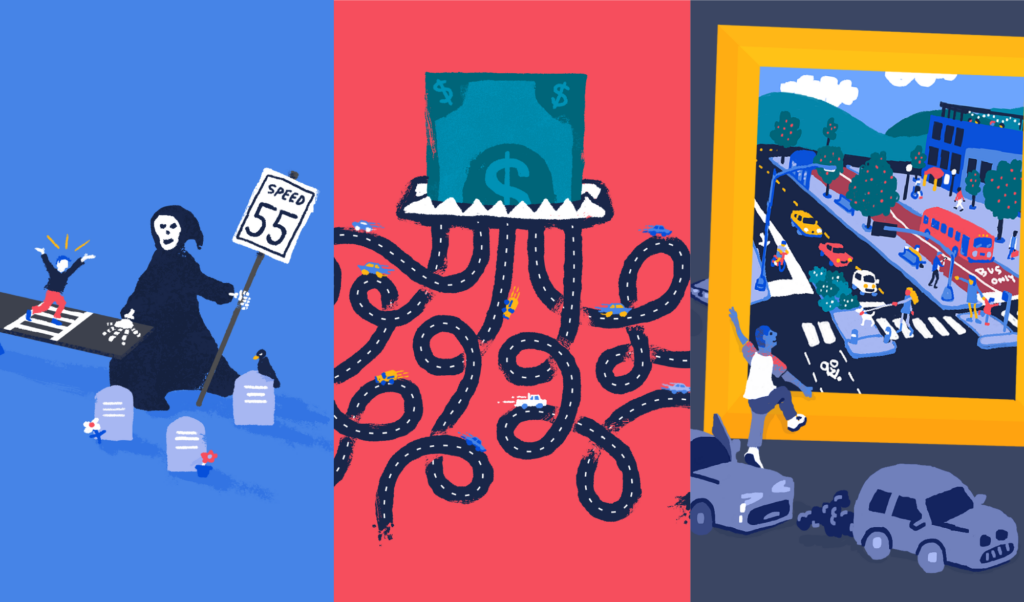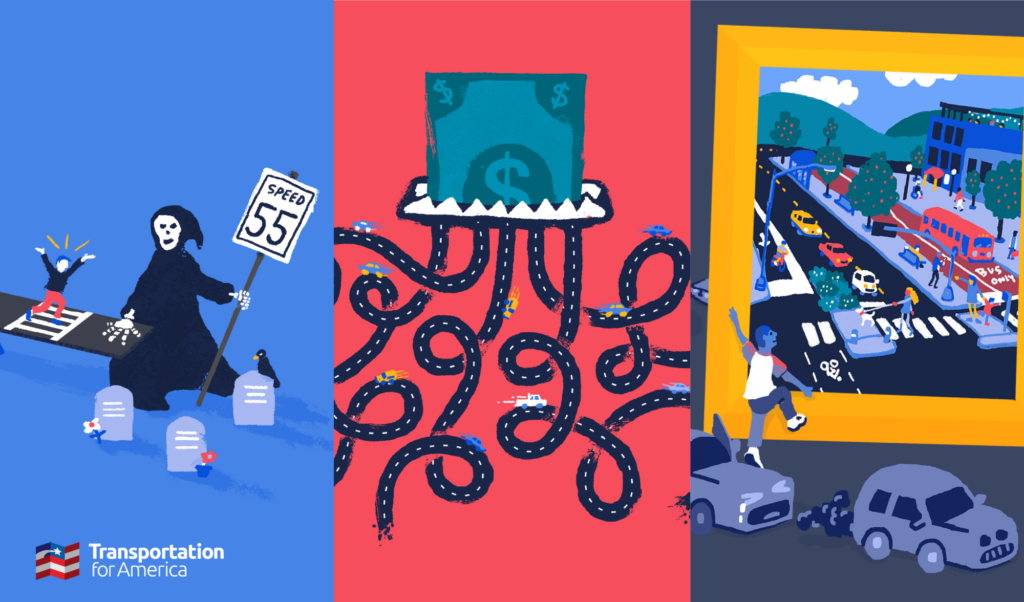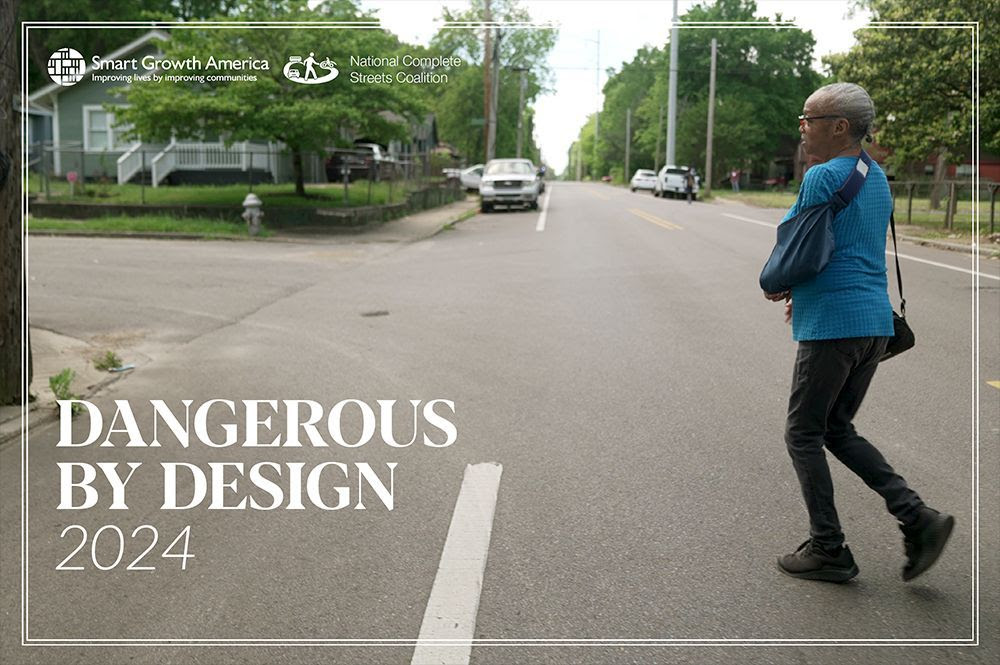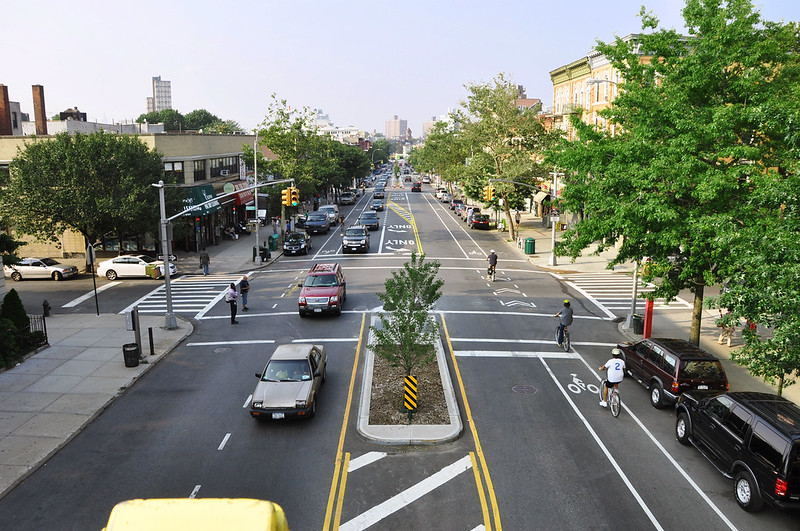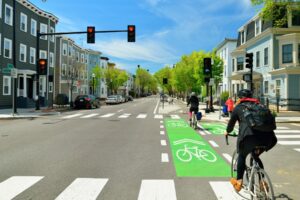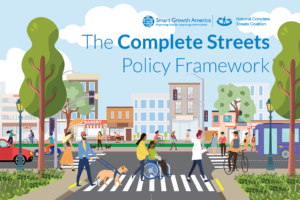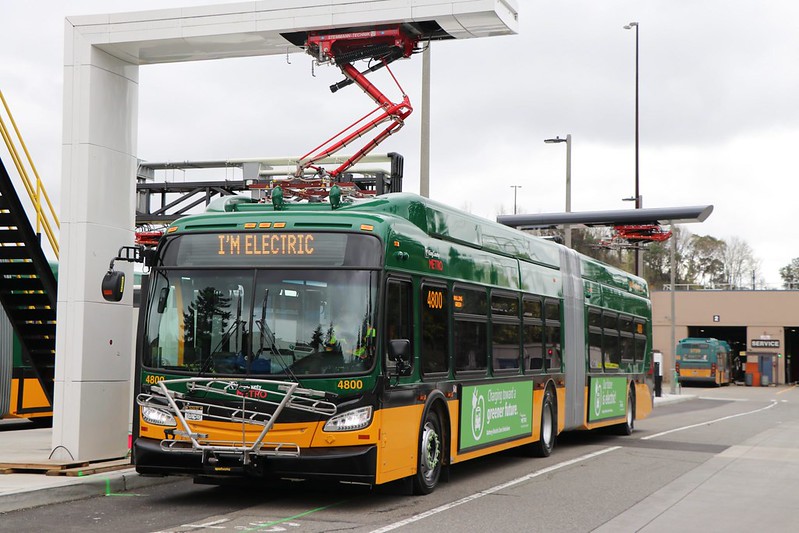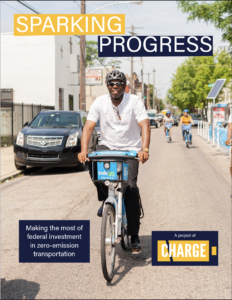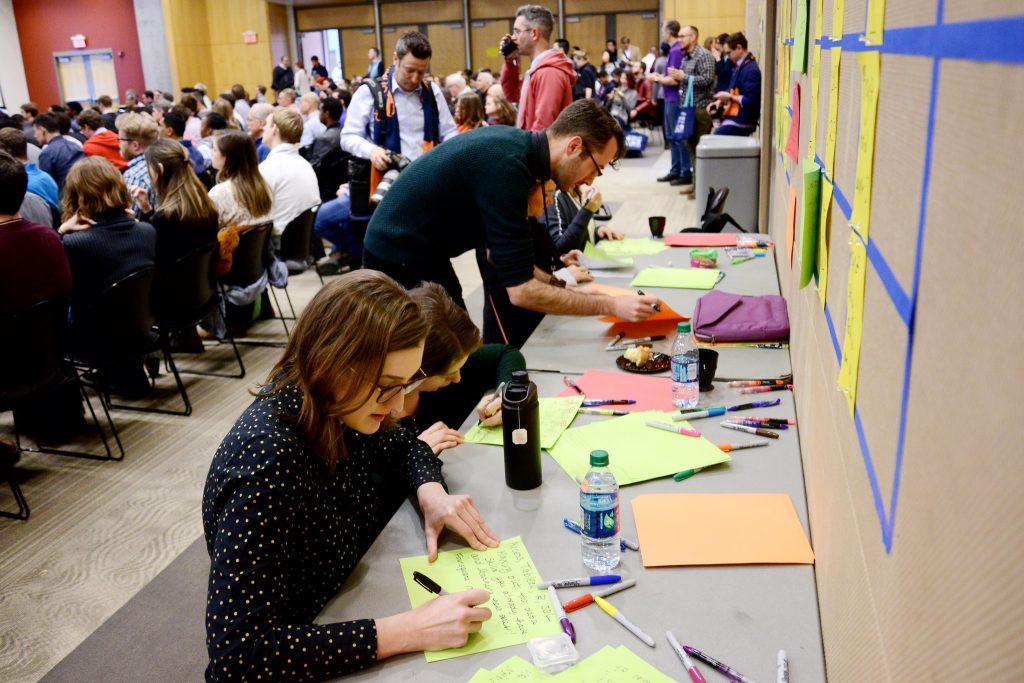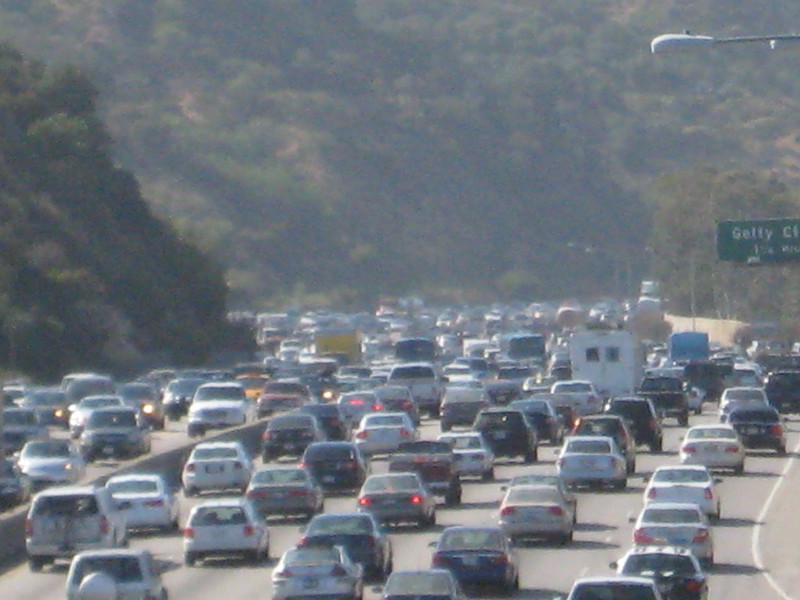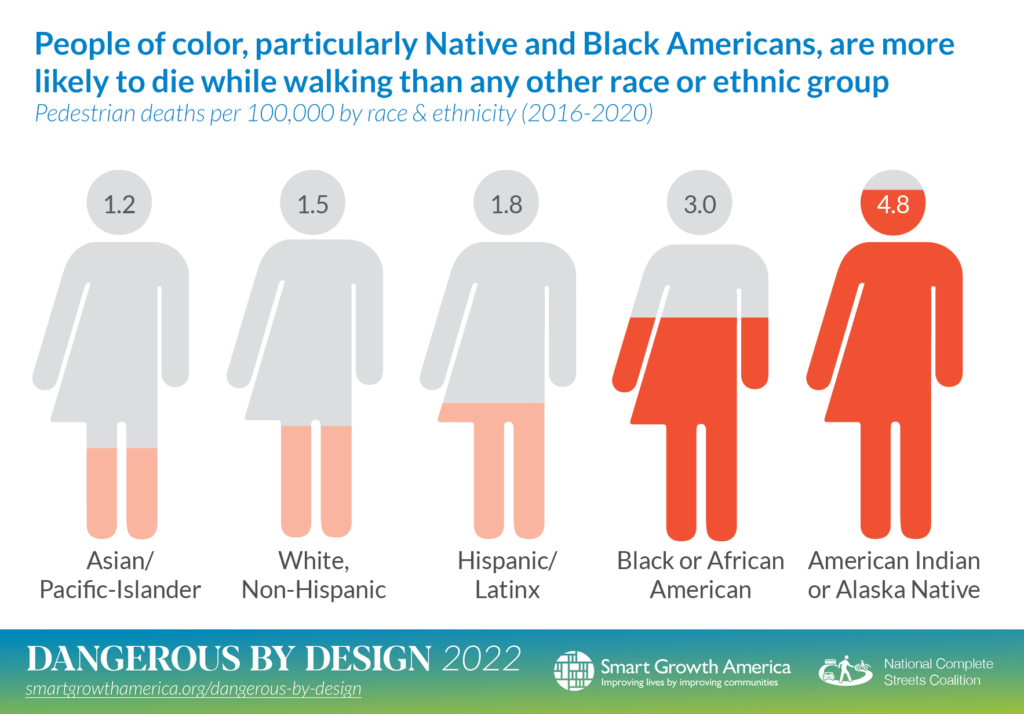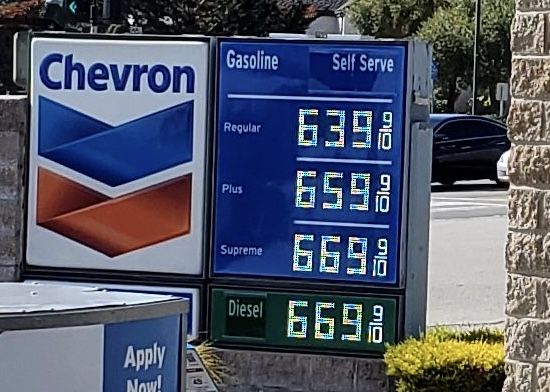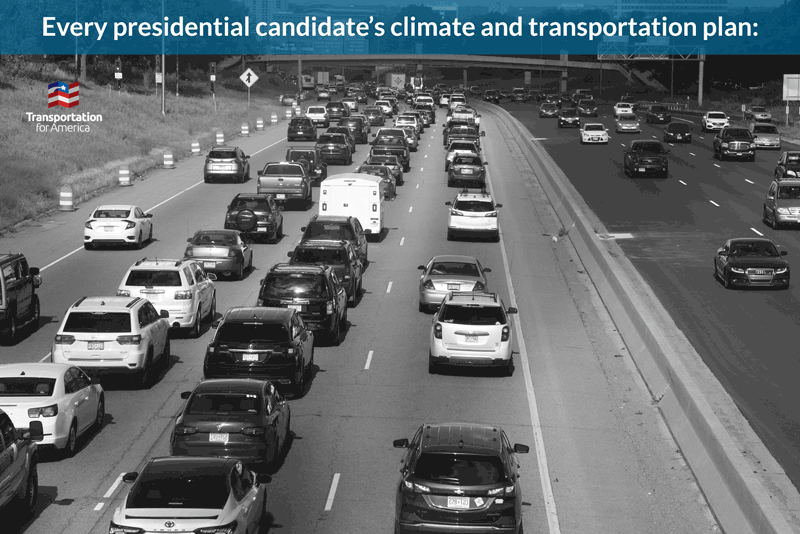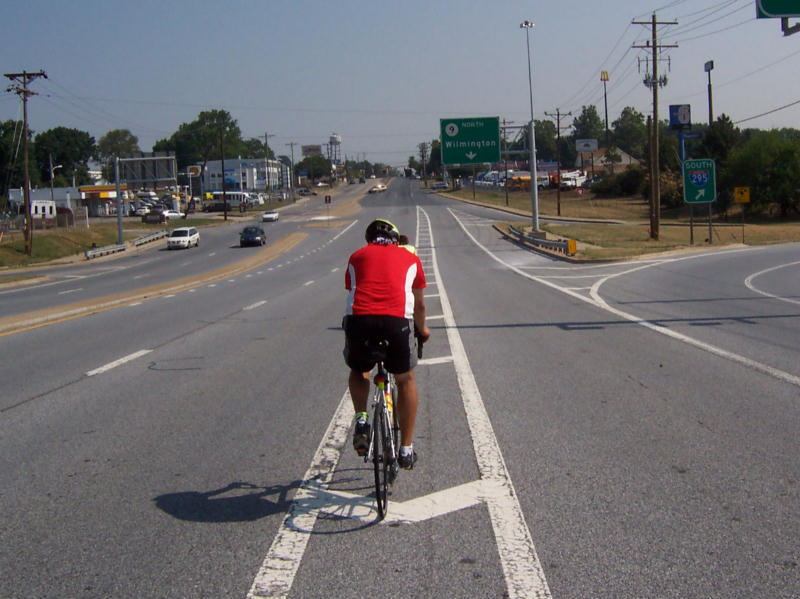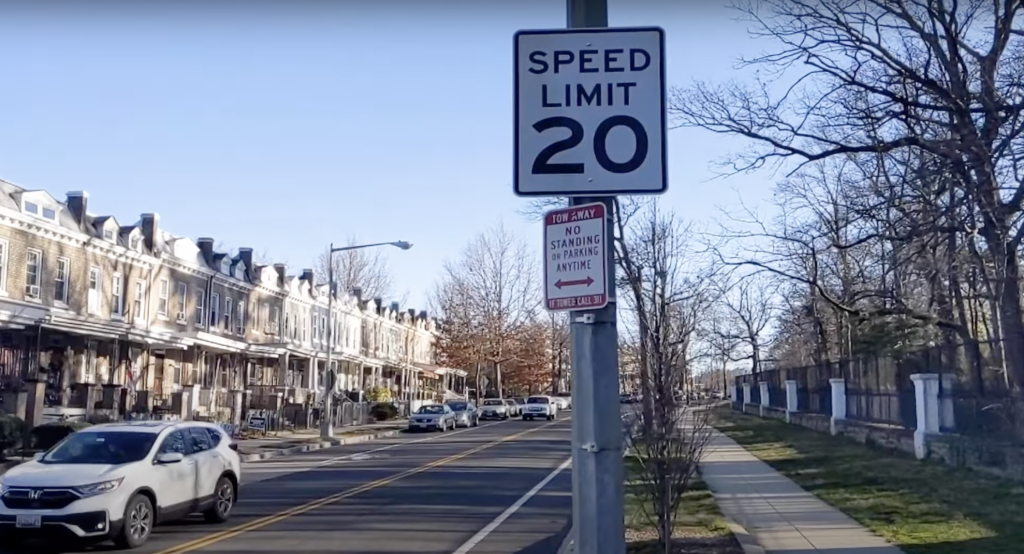
Ask anyone at a state department of transportation, and they’ll tell you that safety is their top priority. Despite these good intentions, our streets keep getting more deadly. To reverse a decades-long trend of steadily increasing pedestrian deaths, state DOTs and federal leaders will need to fundamentally shift their approach away from speed.
7,522 people were struck and killed while walking in 2022, an average of more than 20 deaths per day. These numbers represent the harsh reality many Americans see on a day-to-day basis: in most places across the U.S., there are few options to travel safely and comfortably outside of a vehicle. When that’s the case, a simple walk to school, work, or the grocery store can mean risking injury or death.
Some of the deadliest roads in the nation are state-owned—often wide, high-speed roadways that place an emphasis on vehicle travel, even as they cut through places where people frequently walk, bike, or roll. However, design changes on these deadly roadways often face pushback from state DOTs—even when those same DOTs claim that safety is their number one priority.
There is a logical disconnect between the way our leaders describe the goals of our roadways and the way our roadways are designed. Despite the stated goal of safety, engineers’ actual top priority is moving cars quickly—as evidenced by measures and models like value of time and level of service.
Years of research have shown that when roads are designed for vehicles to drive as quickly as possible, there are serious consequences for the safety of all other travelers. Yet the same design changes that would improve safety also come up against barrier after barrier to progress.
The change we need from state DOTs
The unfortunate reality is that our traffic engineers have been taught for decades that most problems can be solved with wide, high-speed lanes. Changing that thinking requires a real culture shift, starting at the very top. State DOTs require strong leadership and support to tailor projects to a well-defined problem and evaluate the outcomes of their decisions.
A willingness to rethink old models and reckon with the fact that the go-to solution hasn’t solved many of our transportation problems can go a long way in bringing about a safer travel environment. The good news is that alternative solutions are out there—if state DOTs are willing to give them a try. A select number of state DOTs have already started to implement change by, for example, navigating opportunities to utilize a Complete Streets approach on rural highways or trying out a quick-build demonstration project to boost engagement.
The typical approach to designing our roadways has left safety behind. We can’t curb the danger with more of the same. Going forward, state DOTs will need to think outside of the box to protect everyone traveling on their roads.
Our federal leaders have to be part of the solution
Guidance and regulations from USDOT often set standards that prioritize high-speed vehicle travel, but these same regulations also allow state DOTs to make safer choices if they wish. Unfortunately, practitioners at state DOTs don’t always seem to know they have this flexibility, and even if they are aware, they face additional barriers if they want to use it.
When state DOTs use extra time and effort to overcome these barriers and test out a new safety feature, this gets no notice from the federal government—even if it results in improved safety. In fact, if a state DOT does nothing and allows more people to die on their roadways, that DOT receives the same level of funding and attention as those making effective safety improvements. This creates a system where it is far more practical to maintain the deadly status quo than it is to implement proven safety methods.
Recently, our colleagues at Smart Growth America wrapped up a series of technical assistance projects to build partnerships between local communities and state DOTs and advance safety on state-owned roadways. T4A Director and VP of Transportation and Thriving Communities Beth Osborne reflected on the experience:
We’ve heard through our years of work, including most recently with participants in this program, that state DOT staff often feel left on their own to determine whether a non-traditional safety treatment they may like to try out is permitted by USDOT…even if it has a proven track record of improving safety. There is a great opportunity for federal leaders to work with states, local leaders, and safety and public health partners to foster and support more learning through demonstration projects with proactive new guidance.
For state DOTs to truly prioritize safety over speed, system-wide change is necessary—and they can’t do it alone. USDOT can help by providing affirmative guidance that promotes safety strategies that actually achieve results. Future legislation must also hold states accountable for choosing safety over speed.
It’s Safety Over Speed Week
Click below to access more content related to our first principle for infrastructure investment, Design for safety over speed. Find all three of our principles here.
-
Three ways quick builds can speed up safety
It will take years to unwind decades of dangerous street designs that have helped contribute to a 40-year high in pedestrian deaths, but quick-build demonstration projects can make a concrete difference overnight. Every state, county, and city that wants to prioritize safety first should be deploying them.
-
Why do most pedestrian deaths happen on state-owned roads?
Ask anyone at a state DOT, and they’ll tell you that safety is their top priority. Despite these good intentions, our streets keep getting more deadly. To reverse a decades-long trend of steadily increasing pedestrian deaths, state DOTs and federal leaders will need to fundamentally shift their approach away from speed.
-
Why we need to prioritize safety over speed
Our roads have never been deadlier for people walking, biking, and rolling and the federal government and state DOTs are not doing enough. If we want to fix this, we have to acknowledge the fact that our roads are dangerous and finally make safety a real priority for road design, not just a sound bite.





